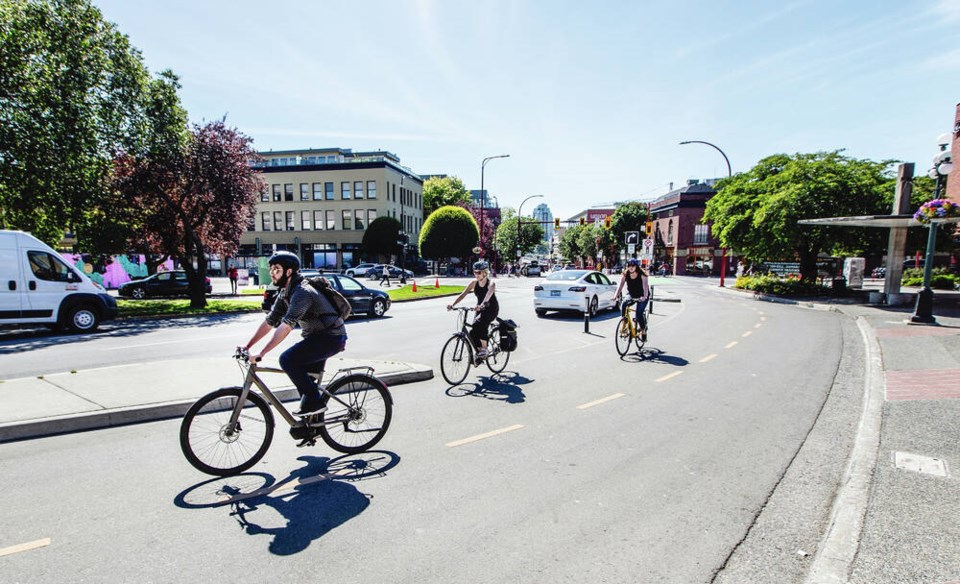Although active transportation advocates are celebrating data showing Victoria has the highest rate of people biking to work among Canada’s 41 largest cities, they say we have a way to go to catch up with cities in Europe.
The most recent Statistics Canada census data show the top three cities in Canada for bike commuting were in B.C., with Victoria in the top spot, followed by Kelowna and Vancouver.
In 2021, one in 20 commuters — or 5.3 per cent — in the capital region regularly biked to work, with second-place Kelowna at two per cent and Vancouver slightly behind at 1.9 per cent.
Victoria also has the second-highest proportion of commuters who walk to work downtown, with 29.5 per cent, just slightly behind Ottawa-Gatineau, where it’s 29.8 per cent.
Statistics Canada says the numbers are not unexpected, given Victoria’s compact urban environment, relatively flat topography and mild winters.
But while the rankings are encouraging, they don’t tell the whole story, says Todd Litman of the Victoria Transport Policy Institute, an independent research organization in the city.
Litman notes that the census data only look at commuting, and thus underestimate the portion of total cycling and walking trips. The numbers don’t take into account errand trips, children’s trips to school, recreational walking and bicycling, travel by children or bicycling trips that include motorized modes, he said.
A bike-bus-walk trip, for example, would be considered a transit trip by Statistics Canada.
Litman said that while Victoria may be rated the top city for bicycling in Canada, it’s not the best in North America, with some university towns in the U.S. rated higher.
“While we can be really proud of what we have achieved, we could be doing better,” he said. “We are nowhere near our potential.”
He singled out the City of Victoria for its leadership in building out its bicycling infrastructure in recent years.
“All of the other jurisdictions in the Capital Regional District, have active transportation plans — and good intentions — but no specific plan on how to achieve their goals.”
Some have plans, but at current funding levels they will not be completed for up to 30 or more years, he said.
Litman criticized some planners for having a “windshield perspective” — seeing infrastructure through the lens of the automobile instead of pedestrians and bicyclists, noting the sidewalk network outside the Victoria is incomplete and hinders accessibility for all users, including those who use wheelchairs.
Corey Burger, policy and infrastructure chair for the non-profit advocacy group Capital Bike, said the census numbers validate local policies that have created walking and cycling trails, making the city more livable and fostering a greater sense of community. He also said there is more to do.
“Let’s not pat ourself on the back so fast,” he said.
“We need to recognize that while we may be the best in Canada, on an international scale, we are still behind. Let’s compare ourself to better cities for perspective.”
He agrees with Statistics Canada that the region’s small size, topography and established cycling culture are all “big drivers” of the high number of commuters bicycling to work on a regular basis, but he said the numbers also show how safe riders feel on some of the region’s protected bicycle lanes.
“The more safe they feel riding, the more they will take to the road,” said Burger. “People feel safe hopping on a bike for both a long commute or short trips to the store.”
The Statistics Canada data does not ask respondents if they are commuting using electric-assisted bicycles and scooters, a fast-growing trend.
“We are now seeing commuters using them to enable them to travel from further away, or use them in hilly routes where they would not have considered taking trips before,” said Litman. “I can see the new technology doubling the number of users.”
>>> To comment on this article, write a letter to the editor: [email protected]



